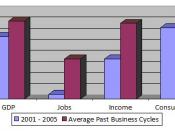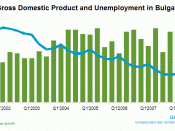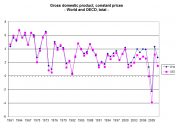Chapter 9: Macroeconomic Performance
Real GDP growth | A measure of the total output expenditure or income of an economy after adjusting for changes in the price level. The growth of real GDP is the % change in output during a particular time period, often measured over a year |
Inflation | The sustained increase in the general level of prices, measured in the UK by changes in the cost of a basket of goods & services bought by a typical household (consumer price index or CPI) weighted according to the expenditure on each item in the basket |
Unemployment | Age arises when someone is out of work and actively seeking employment. Measured as the total number of people unemployed or as a % of the workforce |
Balance of payments | Records money flows into and out of a country over a period of time |
Current Account | Includes money glows due to trade (the trade balance - broken down to trade in goods and services) transfers of interest, profit and dividends (the investment income balance) and transfers of money by Gov. and international organisations (the transfers balance) |
Standard of Living | A measure of the material well-being of a nations and its people |
Short-run economic growth | The actual annual % increase in an economy's output, sometimes referred to as actual economic growth |
Long-run economic growth | The rate at which the economy's potential output could grow as a result of changes in the economy's capacity to produce goods and services, sometimes referred to as potential economic growth |
Output Gap | The difference between the actual and potential output of an economy. It is common practice to refer to a situation where actual output is below potential output as a negative output gap. A positive output gap occurs when, in the short term actual output exceeds the... |


